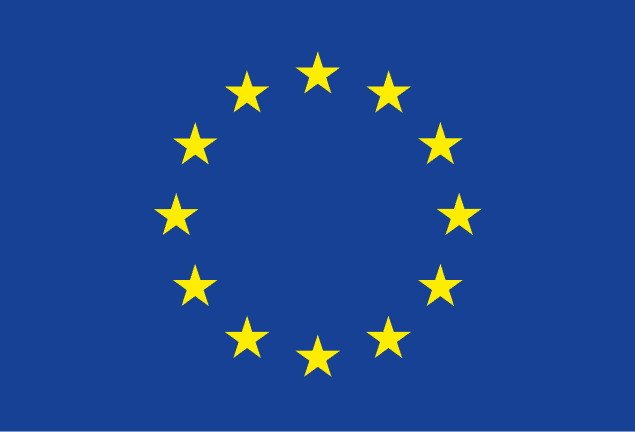It has long been said in the digital industry that ’content is the king‘. The more aware content creators increasingly more often also add that "distribution is the queen". Even the best content will die out among other content if it is not available where the audience is. Using a headless CMS helps in publishing content wherever the user may be. It's worth noting that we're talking about a range of channels here, from traditional websites, through mobile apps, to smartwatches, VR and IoT-connected devices. Just what exactly is headless CMS and is it a solution for everyone?
From this article you will learn, among other things:
- How does Headless differ from a traditional CMS?
- What are the pros and cons of using this solution?
- When to opt for it?
What is a headless CMS?
A headless content management system (CMS) allows you to organise and store content without making assumptions about how or where texts, graphics, videos or other materials are delivered. What does this mean?
In a headless CMS, the content repository (body) is separated from the presentation layer (head). Content is transferred via an API to various devices and adjusted to them so that the user does not notice any errors or shortcomings.
Such a system uses only the backend, i.e. information about what content should be presented (but not what this presentation should look like). Its role is to enable data management and access to it via an API.
With a headless frontend CMS, developers can use the tools and frameworks that suit them. It is even referred to as 'developer first', meaning that it is meant to maximise the work of developers and support the shift of resources from managing digital resources to creating them.
What is the difference between a traditional CMS and a headless CMS?
Traditional CMS systems, when compared to Headless, may seem like a monolith. After all, they were designed to support content management in a single publication channel: websites. In this case, the user interface (here in the sense of how the content is presented) and the data it presents (the content) are one whole.
It's worth mentioning that Headless gives you a lot of freedom in terms of the chosen technology, because the front-end is separated from the back-end. For example, at the beginning you can choose a front-end coded in React, and after some time, change it to the Angular framework; all this without interfering with the backend.
Why choose a Headless CMS?
API first
An API is an interface, a way of communication between systems that allows them to exchange data. It allows a headless CMS to use content across multiple devices and channels. It is also responsible for the ’seamless‘ experience (i.e. one in which people will not notice that the content has been designed for different devices; in other words, no flaws in the presentation interfere with the reception).
Flexibility
When you use a headless CMS, you have the freedom to build your own front-end framework. Thanks to the content layer being separated from the presentation layer, you can choose what technologies to use and what the final design will look like yourself, as well as in which (and how many) media to publish the content.
Scalability
Again: since the backend and frontend are separate, you avoid downtime during implementation or maintenance. This makes change in content management and system design independent from each other. You can scale, optimise and update the site without any loss of traffic results.
Fast and economical publishing
Once changed by an editor, content will be updated across all platforms. There’s no need for the content manager to publish it in a different channel each time or to edit it specifically for a particular medium. Content can be reused.
Compatibility
Content can be displayed on any device and any platform.
Future-ready content
When you publish in a traditional CMS and organise content for each channel, you need to know the requirements of each. Meanwhile, in Headless – again thanks to the fact that content is separate from its presentation – you can prepare to publish in the latest media (smartwatches, AR and VR) or even those that don't yet exist.
What should you be ready for when using Headless?
Headless requires you to build the design and structure of the content yourself.
You have the freedom to design and code the front-end yourself, as there are no set templates. It gives you the possibility to adjust the presentation of the content to your needs. On the other hand, it's worth including a specialist in the calculation who will provide this front-end.
Specialist knowledge is necessary
With Headless, you need additional skills related to JS frameworks. If you don't have someone familiar with them on board, you may need to make an additional investment in external specialists. And not just in terms of the aforementioned design. Developers too, if they are to work with Headless, need to be able to navigate a variety of code bases efficiently.
You'll be able to preview the final layout of the content, but it's a bit more difficult.
Even though Headless comes with WYSIWYG (What You See Is What You Get) editors, unless you take extra steps, it's harder to predict how the content will look in the end (preview requires an additional API).
Make an informed decision: what are the pros and cons of a traditional CMS?
In order to decide between a headless or a traditional CMS, it's also worth knowing the pros and cons of the latter.
The advantages of a traditional CMS are:
- The fact that you get an entire website built upon a system where the correlations between the content and its presentation are constant and clear. You may notice that we’ve pointed out similar features as an argument against this type of CMS; but it all depends on what kind of solution you need. If you’re looking for a WYSIWYG interface, a traditional CMS will be a good option.
- The presentation of content is not completely rigid: within the limits of desktop or mobile design, you have the ability to modify the appearance or size of elements.
- The price of the system is usually fixed (or you can use a free CMS).
- Low entry threshold for novice developers or content creators.
What may discourage you from using it, however, are:
- Limited options when it comes to diversifying publication channels.
Headless solutions to look out for when building a website
Contentful
It's an API-first platform with which you can build digital experiences. It's used by over 2,000 clients (including Gucci, Danone and Atlassian). Its creators boast results such as a 60% increase in e-commerce conversions after implementing the system, a 5x improvement in load times or a 13% increase in average order value.
Strapi
It's a headless CMS available as open-source and all its code is on GitHub, edited by hundreds of users. This gives you the support of the community and the opportunity to learn from the experience of others. It is described as developer-first, 100% JavaScript, allowing full customisation.
When to opt for Headless CMS?
- When you want to scale quickly and care about time-to-market. You already know that headless CMS separates the front-end and UX layer from the backend. This means that both teams can work independently, and this allows you to work and scale faster.
- When you publish across multiple channels. Headless CMS is no longer just a website or mobile app – it also includes native platforms, IoT-connected devices, smartwatch displays or even print exports. Opt for this solution if you're moving between different channels and want to provide a seamless experience for your audience in each.
- When you treat content personalisation as an important marketing tool and want to increase user engagement with it. With Headless, you can create interactive digital experiences and deliver tailored content to your audience.
…and when is it not worth doing?
- When you only need uncomplicated functionalities to publish content, e.g. you base your content marketing on content published only in one channel: on your website or in a mobile app.
- When the templates in your current CMS are already sufficient, the website is simple, the budget is limited, and you don't plan to scale up significantly in the future.
- When you don't have a large team of developers, and your content is handled by developers and content creators who find it easier to work together on a single platform.
- And above all: when you want to have full control over the content – from creation, through design, to publication.





